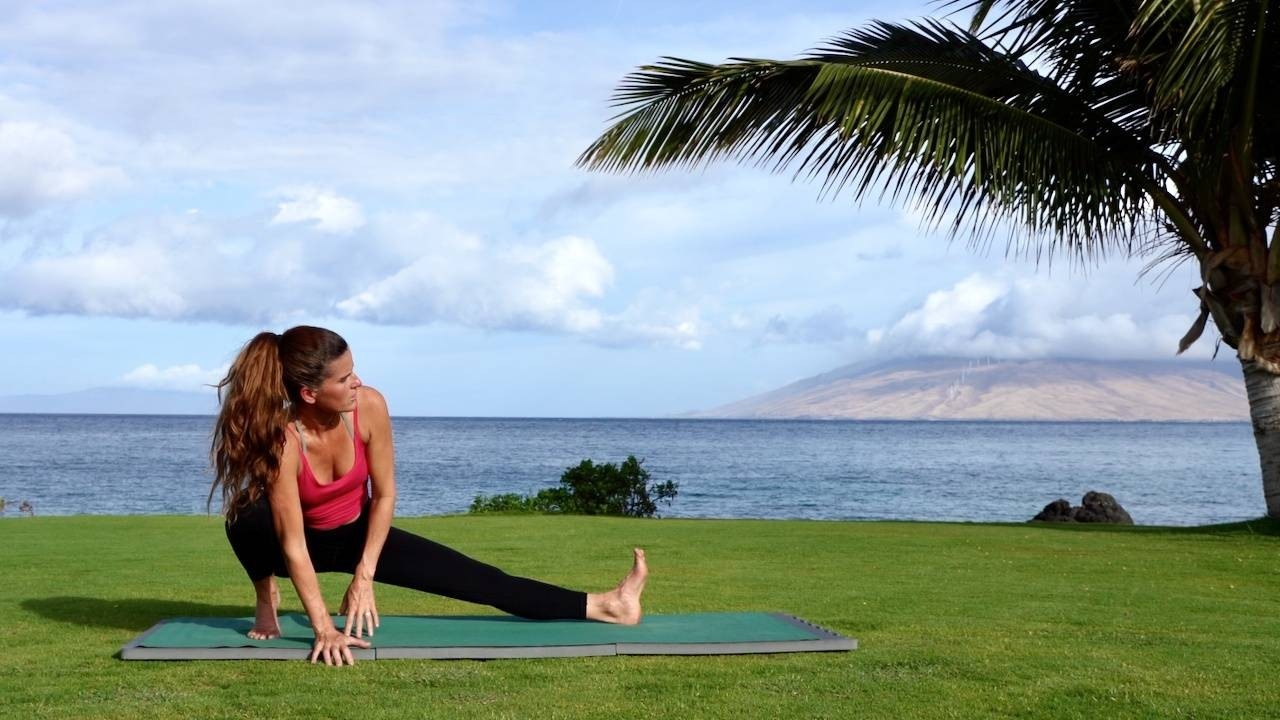Here's what happens when you mix Yin & Yang Yoga

Yin Yoga is an incomplete practice. Why is this? First we must look at the term Yin which comes from Taoism. Taoist theory uses the words Yin and Yang to explain opposing life energies that should be kept in balance.
In keeping with this theory, optimal physical health will include a balance of relaxing (Yin) exercises and energizing (Yang) exercises. If someone does a lot of very relaxing yoga, such as Yin Yoga, it might cause her to come out of balance unless she counters it with Yang activity. Her Yang activity could be a vigorous form of yoga, but it could also be something else, like running, dancing or working out.
Many Yin Yoga practitioners like to keep their Yin practice separate, but others enjoy mixing Yin & Yang for a balanced, singular practice. Here's an example of this – a 37 minute guided Slow Yin Yang Flow yoga class.
The video begins by energizing the spine and strengthening the core with vinyasa style backbends and forward bends. It then warms up the legs with Warrior poses and builds arm strength by adding gentle bodyweight moves. After 15 minutes it's all Yin, stretching deeply into the hip flexors, glutes and spine. This is my favorite part of the practice because the Yin relaxation can be so much deeper after a bit of exertion. With its rhythmic and repetitive movements, the Yang part strengthens muscles, energizes the brain and stimulates blood flow in the heart.
Should Yin Yoga only be done with cool muscles?
Some people believe that Yin Yoga should never be done after Yang Yoga or that you should always do Yin Yoga when your muscles are cool. These myths have caused a great deal of confusion in the Yin Yoga world. Some common questions I get from students and teachers about this are:
- I heard Yin Yoga should be done in a cool room - is that true?
- Is it truth or myth that the body must be cool in order to effectively stimulate fascia?
- Is it safe to do Yin Yoga when your body is warmed up?
- Is it dangerous to do Yin after Yang or Vinyasa yoga?
Here's what I've come up with after studying and teaching Yin Yoga for the past 12 years.
The pros and cons of doing Yang before Yin
First, let's dispel the myth that it's inherently dangerous to practice Yin with warmed muscles. It is not. That said, there are a number of factors to consider when choosing.
One of the primary goals of Yin Yoga is to stimulate and stretch fascia, a dense and energetically sensitive type of tissue that weaves through all the joints and muscles of the body.
When you practice Yin with a cooler body that's not warmed up, you may feel a stretch over a broader area. This is likely your fascia lengthening or broadening as it weaves through the muscles and spans the spaces between your joints.
On the other hand, when you practice Yin with a warmer body, such as after a Yang practice, you're more likely to feel a stimulation in the joint itself since you may have worked through a good deal of the tension in your fascia. This joint stimulation is considered beneficial in Yin Yoga – however, like anything, it can be overdone.
For yogis who are more flexible, it may be preferable to practice this way, when the muscles are not warmed up. This would mean avoiding Yang-before-Yin practices. This is because if a flexible yogi warms up first, she might feel the stretch primarily in the joint, without ever enjoying the muscle-fascia stretch. That means she'd be missing the exact part of the practice that many Yin Yogis find most satisfying and beneficial.
The joint stretch is not a problem per se, but it can be a riskier place for a beginner who is inexperienced yet flexible, since she may not know her limits. Even for seasoned yin yogis who know their limits quite well, a broader muscle-fascia sensation can feel exquisite, but it may only be available to them when their muscles are relatively cool.
Stiffer people have less danger of injuring their joints, no matter how much the body is warmed up. This is because they have much more myofascial tension to work through. For these people, warm and cool are both fine, but warming up the body first may be preferable because it can help their Yin practice to be more comfortable. Warming up a stiff body and adding a few degrees of motion to key joints like the hips and spine will enable gravity to help more.
It's different for everyone
For some people, on some days, it's better to do Yin before Yang, and on other days or in another person's body it might be the complete opposite. Experiment with both ways, listen to your body's responses, and let your intuition be your guide.
For a more in-depth discussion about this topic read this blog: Warm Yin, Cool Yin, Muscles & Fascia






